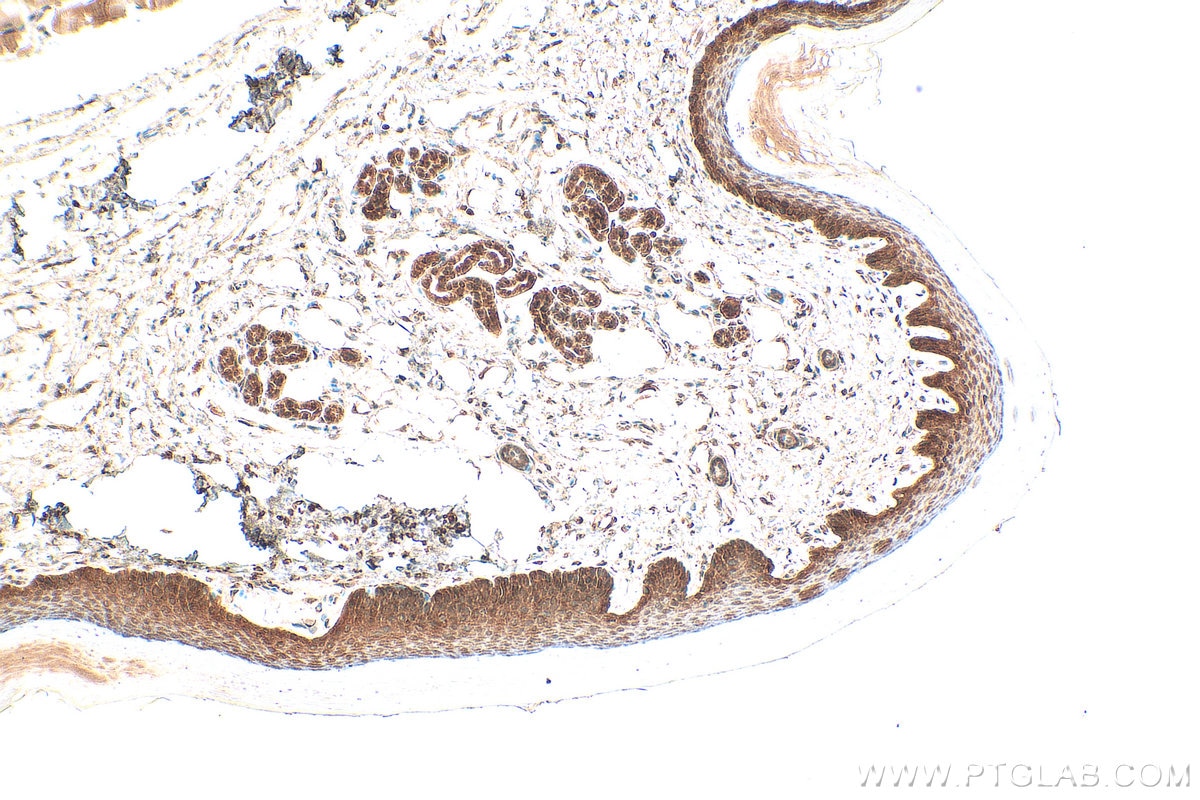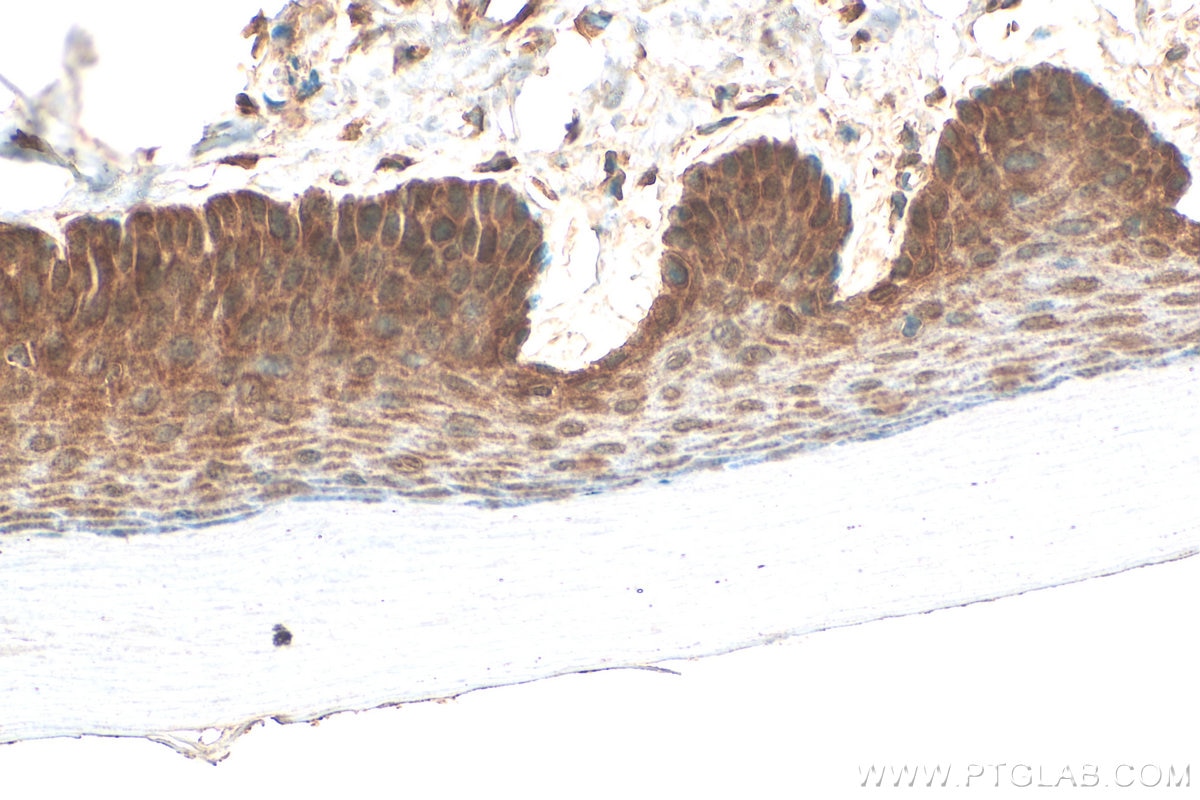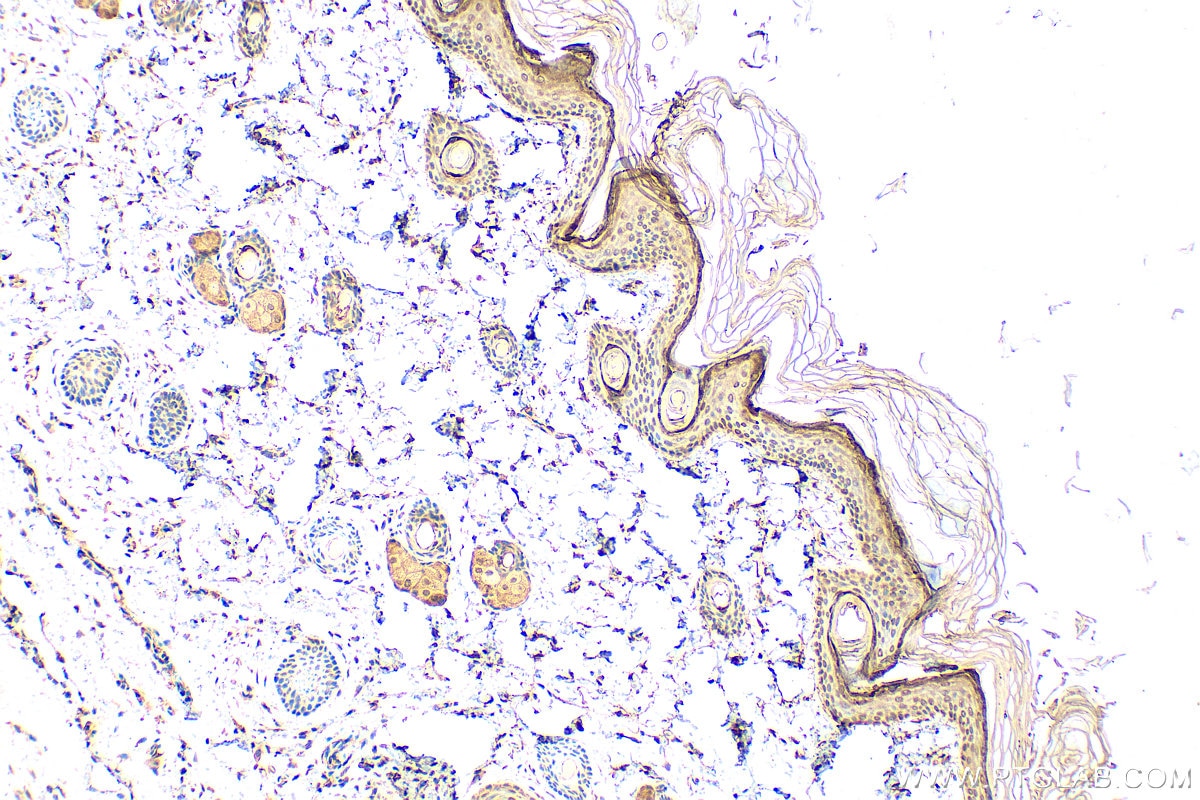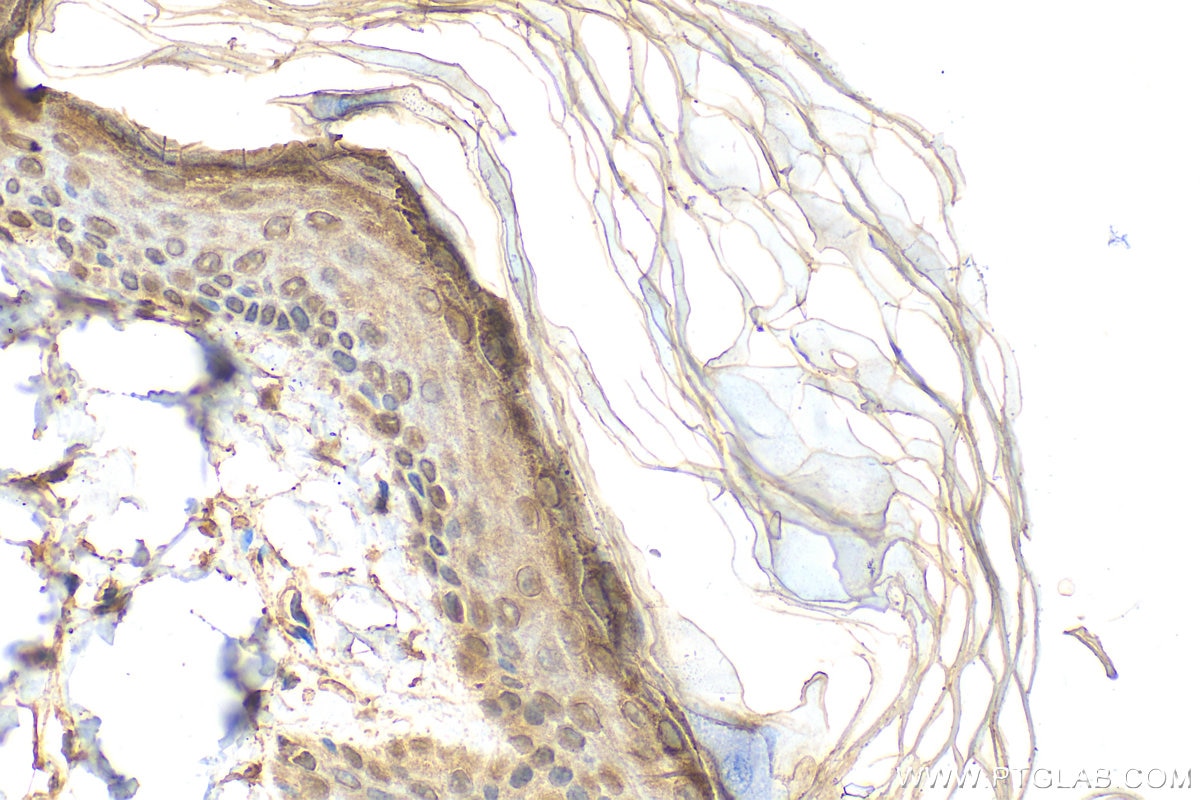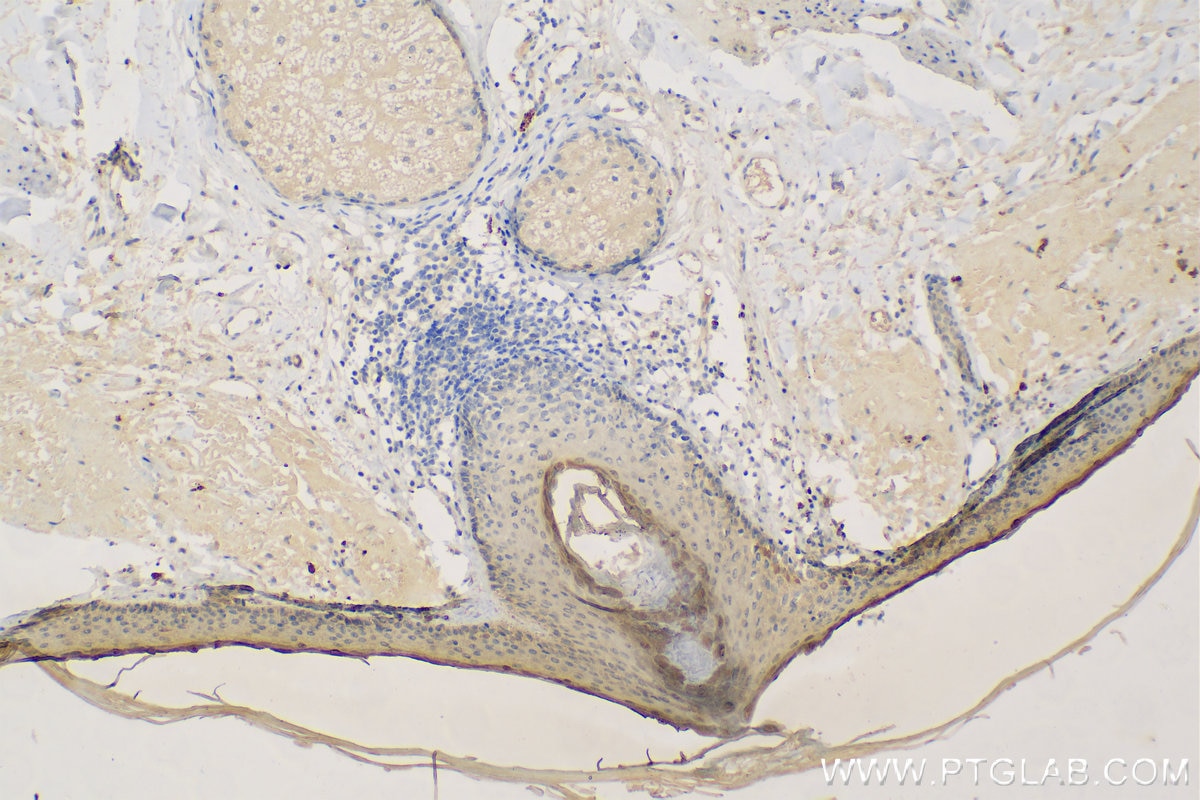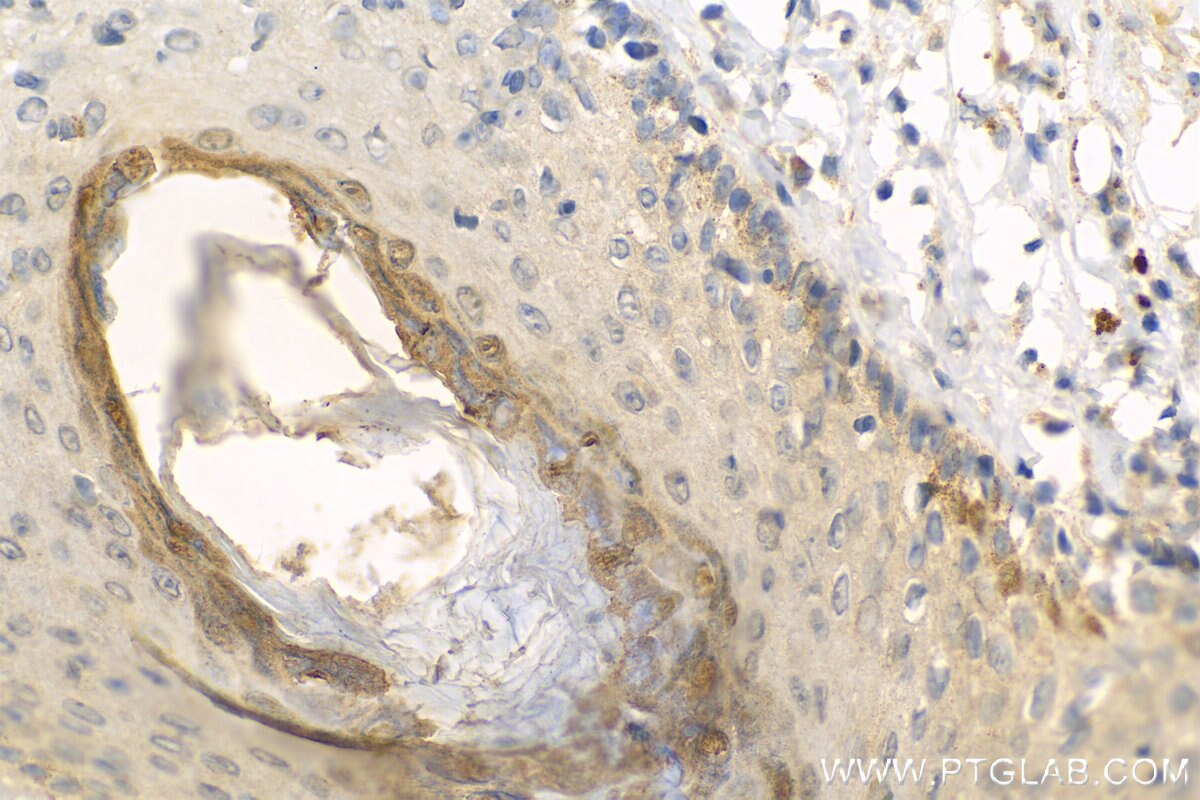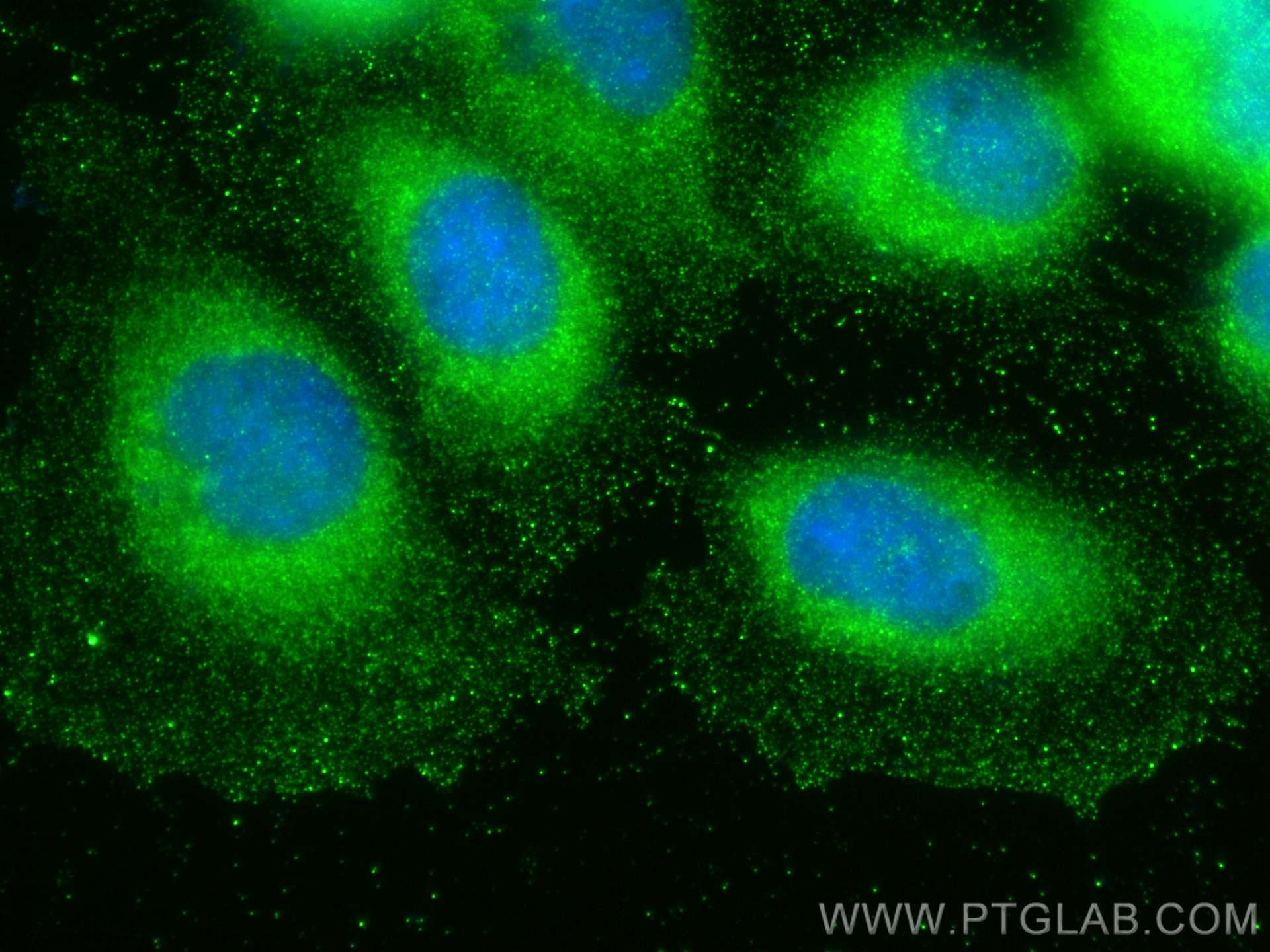Loricrin Polyklonaler Antikörper
Loricrin Polyklonal Antikörper für IHC, IF/ICC, ELISA
Wirt / Isotyp
Kaninchen / IgG
Getestete Reaktivität
human, Maus, Ratte
Anwendung
WB, IHC, IF/ICC, ELISA
Konjugation
Unkonjugiert
Kat-Nr. : 55439-1-AP
Synonyme
Geprüfte Anwendungen
| Erfolgreiche Detektion in IHC | Maushautgewebe, human paracancerous tissue of skin Hinweis: Antigendemaskierung mit TE-Puffer pH 9,0 empfohlen. (*) Wahlweise kann die Antigendemaskierung auch mit Citratpuffer pH 6,0 erfolgen. |
| Erfolgreiche Detektion in IF/ICC | A431-Zellen |
Empfohlene Verdünnung
| Anwendung | Verdünnung |
|---|---|
| Immunhistochemie (IHC) | IHC : 1:50-1:500 |
| Immunfluoreszenz (IF)/ICC | IF/ICC : 1:50-1:500 |
| It is recommended that this reagent should be titrated in each testing system to obtain optimal results. | |
| Sample-dependent, check data in validation data gallery | |
Veröffentlichte Anwendungen
| WB | See 15 publications below |
| IHC | See 10 publications below |
| IF | See 11 publications below |
Produktinformation
55439-1-AP bindet in WB, IHC, IF/ICC, ELISA Loricrin und zeigt Reaktivität mit human, Maus, Ratten
| Getestete Reaktivität | human, Maus, Ratte |
| In Publikationen genannte Reaktivität | human, Maus, Ratte |
| Wirt / Isotyp | Kaninchen / IgG |
| Klonalität | Polyklonal |
| Typ | Antikörper |
| Immunogen | Peptid |
| Vollständiger Name | loricrin |
| Berechnetes Molekulargewicht | 26 kDa |
| GenBank-Zugangsnummer | NM_000427 |
| Gene symbol | Loricrin |
| Gene ID (NCBI) | 4014 |
| Konjugation | Unkonjugiert |
| Form | Liquid |
| Reinigungsmethode | Antigen-Affinitätsreinigung |
| Lagerungspuffer | PBS with 0.02% sodium azide and 50% glycerol |
| Lagerungsbedingungen | Bei -20°C lagern. Nach dem Versand ein Jahr lang stabil Aliquotieren ist bei -20oC Lagerung nicht notwendig. 20ul Größen enthalten 0,1% BSA. |
Hintergrundinformationen
Loricrin, also named LOR and LRN, is a major component of the cornified cell envelope (CE) expressed late in epidermal differentiation in the granular layers of normal skin. This antibody is specific to Loricrin.
Protokolle
| PRODUKTSPEZIFISCHE PROTOKOLLE | |
|---|---|
| IHC protocol for Loricrin antibody 55439-1-AP | Protokoll herunterladenl |
| IF protocol for Loricrin antibody 55439-1-AP | Protokoll herunterladen |
| STANDARD-PROTOKOLLE | |
|---|---|
| Klicken Sie hier, um unsere Standardprotokolle anzuzeigen |
Publikationen
| Species | Application | Title |
|---|---|---|
Cell Death Differ ENKD1 promotes epidermal stratification by regulating spindle orientation in basal keratinocytes. | ||
EMBO Rep Regulation of epidermal differentiation through KDF1-mediated deubiquitination of IKKα. | ||
Br J Pharmacol FGF21 promotes migration and differentiation of epidermal cells during wound healing via SIRT1 dependent autophagy. | ||
J Nanobiotechnology Exosomes from human induced pluripotent stem cells-derived keratinocytes accelerate burn wound healing through miR-762 mediated promotion of keratinocytes and endothelial cells migration. | ||
J Ethnopharmacol Topical application of Artemisia annua L. essential oil ameliorates 2,4-dintrochlorobenzene-induced atopic dermatitis in mice | ||
J Eur Acad Dermatol Venereol Differentially expressed proteins identified by TMT proteomics analysis in children with verrucous epidermal naevi. |
